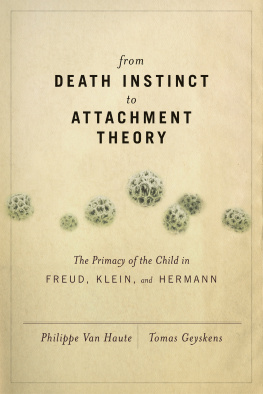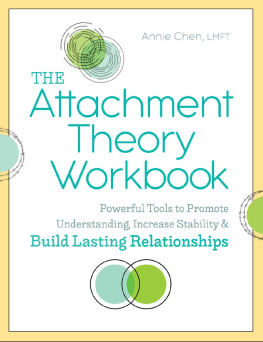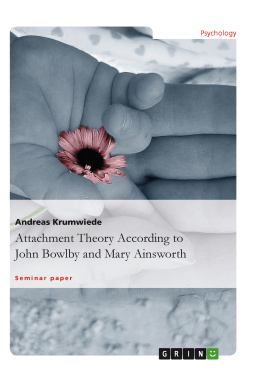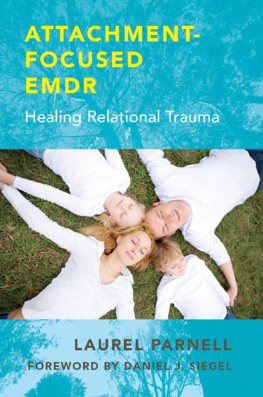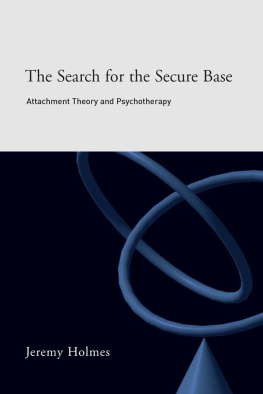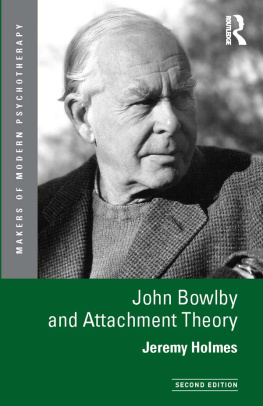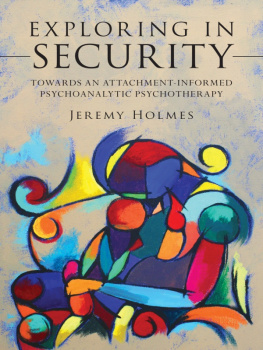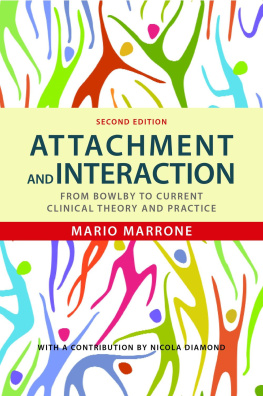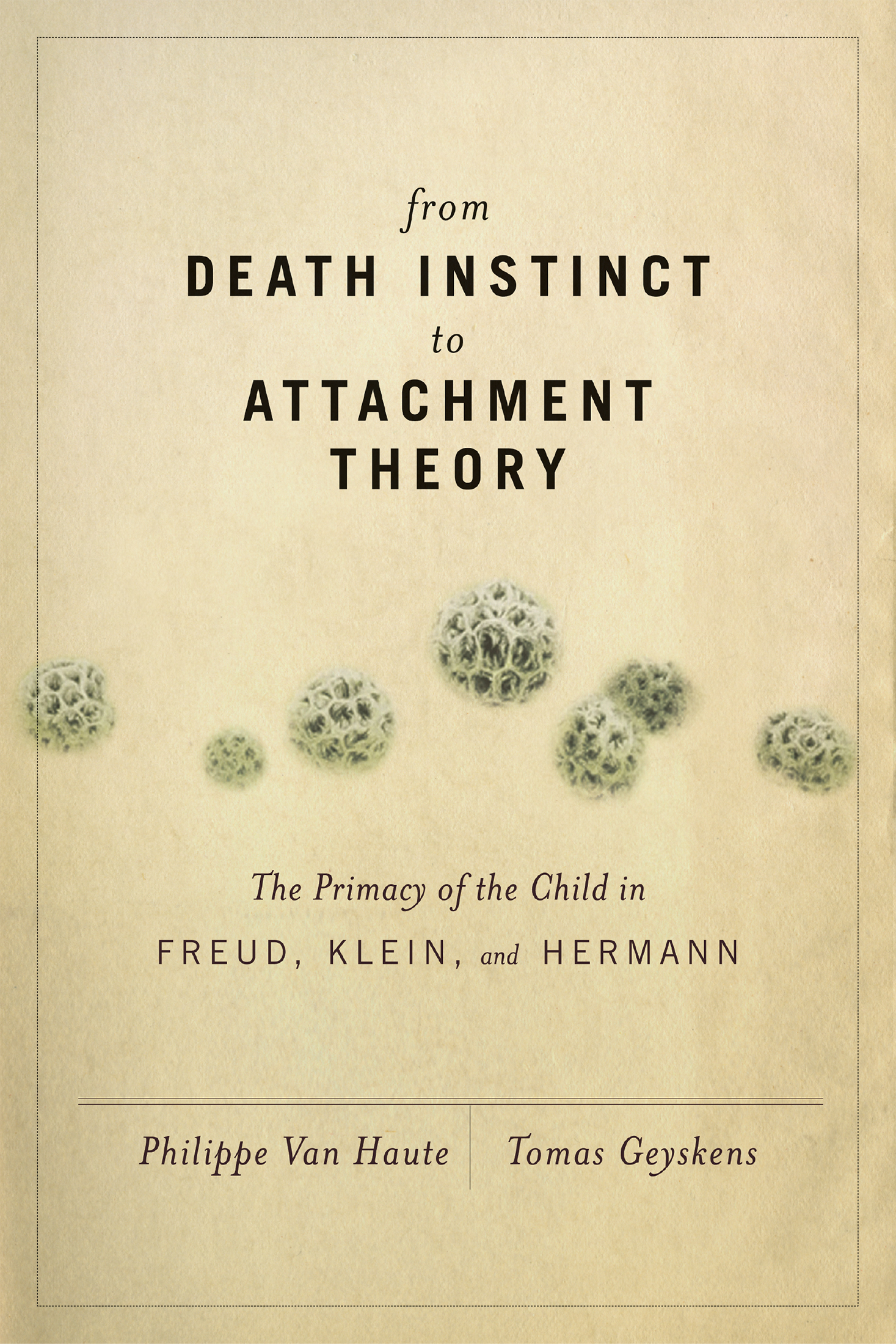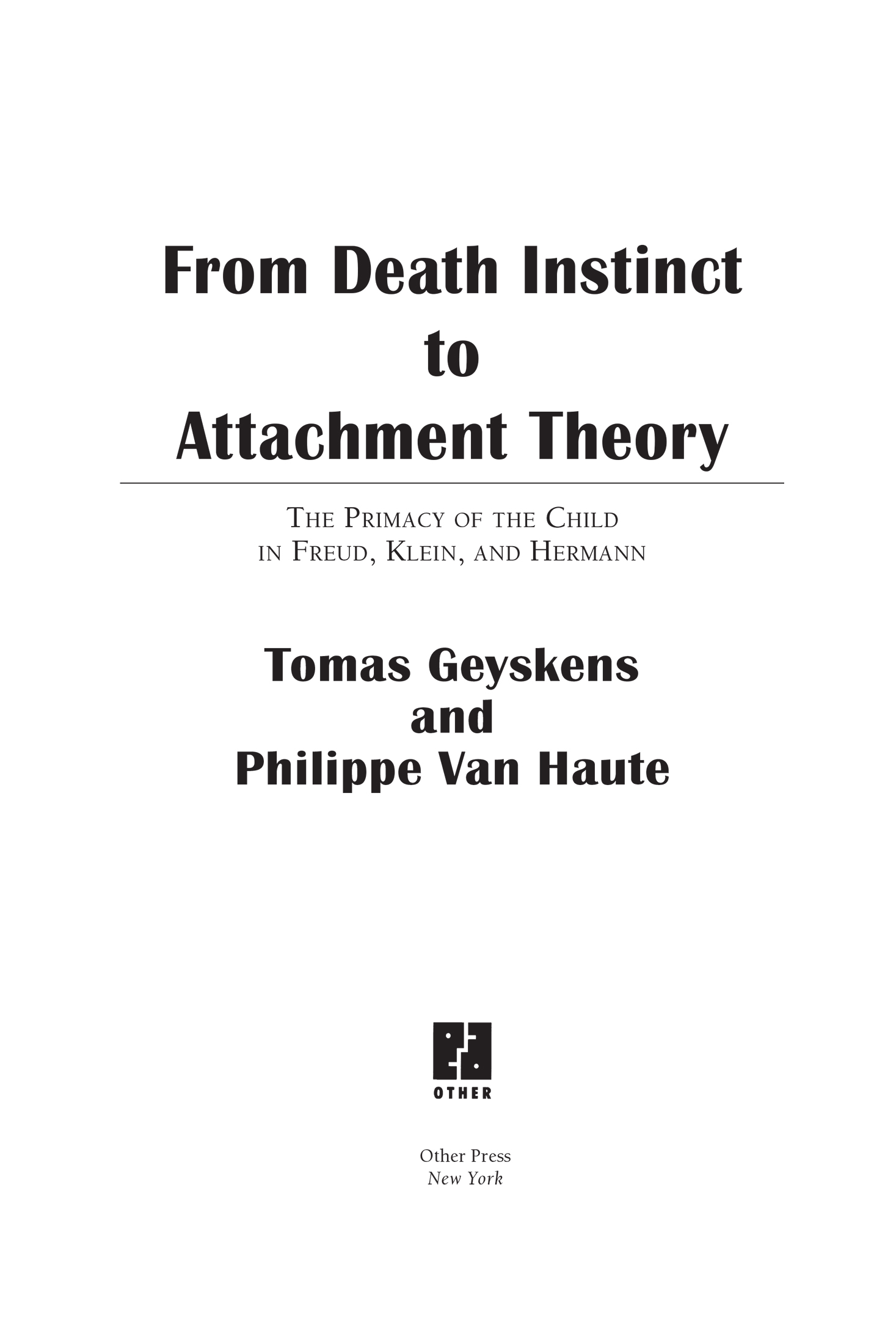Contents
Landmarks
Print Page List
Translated from the Dutch with the help of a grant from the NOW (Dutch Organisation for Scientific Research).
Copyright 2007 by Tomas Geyskens and Philippe Van Haute
Production Editor: Mira S. Park
Ebook ISBN9781635421187
All rights reserved. No part of this publication may be reproduced or transmitted in any form or by any means, electronic or mechanical, including photocopying, recording, or by any information storage and retrieval system, without written permission from Other Press LLC, except in the case of brief quotations in reviews for inclusion in a magazine, newspaper, or broadcast. For information write to Other Press LLC, 267 Fifth Avenue, 6th Floor, New York, NY 10016. Or visit our Web site: www.otherpress.com.
The Library of Congress has cataloged the printed edition as follows:
Geyskens, Tomas.
From death instinct to attachment theory : the primacy of the child in Freud, Klein, and Hermann / Tomas Geyskens and Philippe Van Haute.
p.; cm.
Includes bibliographical references and index.
ISBN 978-1-59051-152-7
1. Psychoanalysis. 2. Death instinct. 3. Object relations (Psychoanalysis) 4. Freud, Sigmund, 18561939. 5. Klein, Melanie. 6. Hermann, Imre, 18891984. I. Haute, Philippe van, 1957 II. Title.
[DNLM: 1. Freud, Sigmund, 18561939. 2. Klein, Melanie. 3. Hermann, Imre, 18891984. 4. Psychoanalytic Theory. 5. Death. 6. Instinct. 7. Object Attachment. WM 460 G397f 2007]
BF175.G483 2007
150.195dc22
2006005943
a_prh_5.6.0_c0_r0
Contents
Introduction
THE DEATH INSTINCT: A SUPERFLUOUS HYPOTHESIS?
In 1920 Freud wrote Beyond the Pleasure Principle, in which, for the first time, he introduced the death instinct. To the present day, this concept has been in great dispute. Enthusiastically received by some (for example, Klein and Lacan) as a necessary element of metapsychology, it has been dismissed by others as a useless speculation that was clinically completely superfluous and only served to give psychoanalysis a bad name in scientific circlesthe latter more pronouncedly so because Freud conceived of the death instinct as a cosmological principle at work, not only in human psychology but also in nature in its entirety. As such, Beyond the Pleasure Principle has all the characteristics of a meditation on the philosophy of nature, the link with clinical practice not always being so readily apparent. Regardless, it was precisely clinical problems that caused Freud to introduce this problematic concept into his theory.
Until the publication of Beyond the Pleasure Principle, Freud had assumed that mental life was governed by the pleasure principle. According to this principle, all mental activity aims at attaining pleasure and at avoiding unpleasure. If, as in the case of neurosis, unpleasure does nevertheless occur, it must be traced back to a repressed infantile experience of pleasure. This means that all neurotic symptoms are the expressions of infantile sexual desires and impulses. After the First World War, however, Freud was confronted with traumatized veterans whose symptoms do not correspond to the logic of the pleasure principle. The clinical experience of war neuroses compelled Freud to reevaluate his theory of the pleasure principle. What these traumatized patients repeated again and again in their dreams and symptoms were, after all, not unconscious experiences of pleasure, but, on the contrary, painful experiences that were at no point in time pleasurable. This compulsion to repeat can also be found in the pathology of neurotic subjects and in therapy. Freud noted that during transference patients repeat not only experiences that once provided pleasure, but also infantile experiences of neglect, abuse, and humiliation that were never pleasurable. From 1920, Freud therefore felt it necessary to develop a theory of the compulsion to repeat and trauma beyond the pleasure principle.
In Beyond the Pleasure Principle Freud links the compulsion to repeat to an organically rooted death instinct. The compulsion to repeat is the expression of a demonic principle at work in everyones mental life. In this manner Freud turns the compulsion to repeat that he discovers in traumatic neurosis into the most primary dynamic principle in the psychological apparatus of all of us. By assigning it a biological basis, Freud turns the compulsion to repeat into a universal characteristic of human nature.
This generalization, from pathology to mental life as such, is characteristic for Freudian psychoanalysis. Freudian psychoanalysis is indeed a clinical anthropology. To study the fundamental dimensions of human existence, it consults its pathological variants. Freud calls this the crystal principle: the subject fractures along lines that had previously not been visible, just like a crystal. Pathology reveals the hidden structure of normality, which must be examined from the perspective of these fault lines. In his study of human sexuality, for example, Freud (1905b) takes sexual perversions as his starting point, which he views as the exaggerations of tendencies that are present in every person. Analogously, the study of traumatic neuroses leads to the affirmation of a biologically grounded compulsion to repeat, which effectively sidelines the pleasure principle.
Does the reference to a death instinct provide a better insight into the pathological phenomena it is meant to elucidate? It is noteworthy that in the clinical texts published after Beyond the Pleasure Principle, Freud makes little or no mention of the death instinct. In these texts, as elsewhere, Freud is looking for an infantile factor that may serve to explain the pathology. Any pathology must be traced back to the experiences in early childhood that lie at its origin. In this context Freud understands traumatic neuroses as proceeding from the repetition of a vital helplessness we have all known as children. According to Freud, enduring a life-threatening situation can only cause a traumatic neurosis to come about insofar as this situation leads us into a state of complete helplessness. The confrontation with mortal danger repeats an archaic situation of helplessness. Our later anxieties are also always a repetition and the working through of this original Hilflosigkeit. Freud adds that this helplessness and the infantile traumas linked thereto are not contingent factors that could be avoided by, for example, a good-enough mother (Winnicott). Indeed, the helplessness of the child is fundamentally a helplessness with regard to its own instincts. The shortcomings of the caring adult constitute only part of the radical helplessness of the child toward its own instincts. Such primitive catastrophes are inevitable and belong in essence to everyones childhood. Freud thus formulates a primacy of the child: infantile traumas are inevitablethey only differ in intensityand they remain determinative for our later course in life. In essence the human being remains out of joint.
The study of traumatic neurosis confirms the existence of a universal infantile trauma at the origin of subjectivity. The binding and psychological working through of this trauma is consequently a universal task to which the traumatic neurosis bears witness in an exaggerated manner. According to Freud the repetition of the traumatic situation in dreams and actions is just a desperate attempt to attain an active position toward trauma in extremis. By repeating trauma we can become its subject instead of its passive victim. The affects that at the time of trauma were impossible can still be developed in its repetition. The anger, sadness, or fear that only arise in the repetition of the trauma make of the compulsion to repeat a universal academy of suffering.

